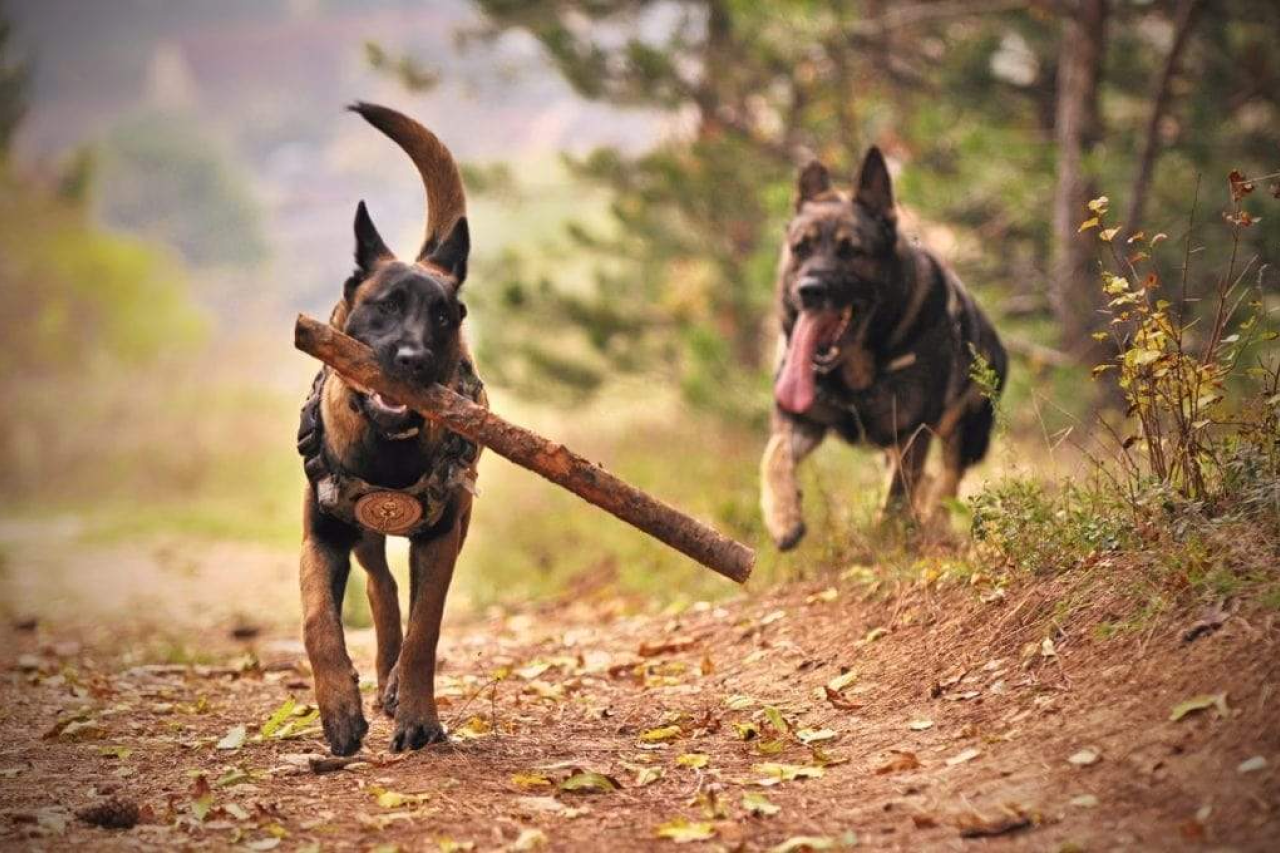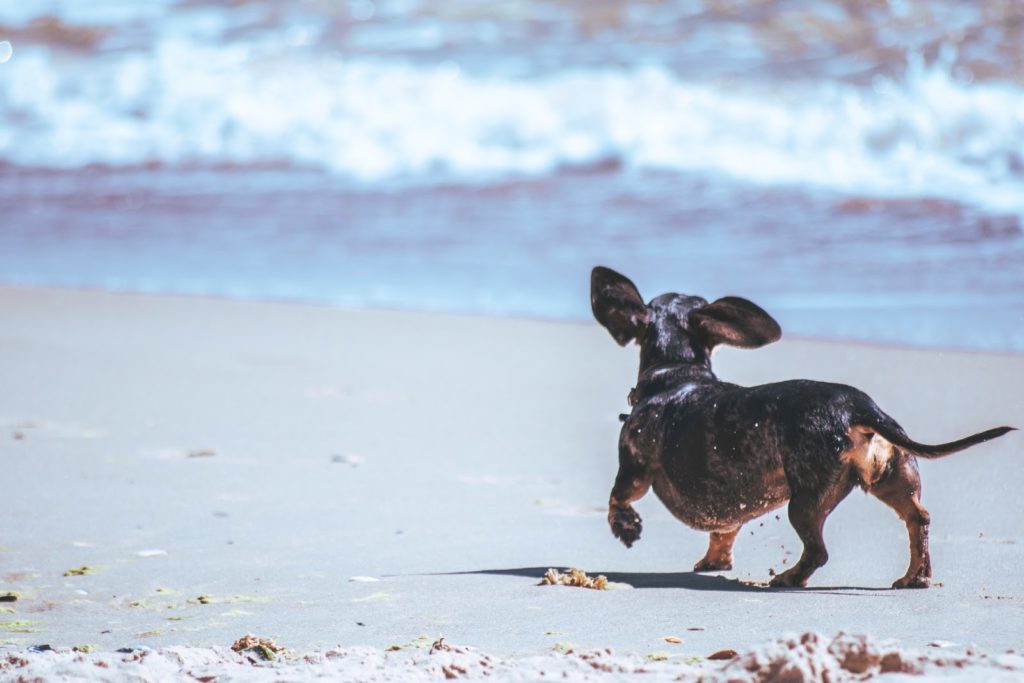
Why Do Dogs Wag Their Tails? The Science Behind Tail Wagging
It's one of the great joys of dog parenting. You come home at the end of a long day and are greeted by your excited furball's slobbery kisses and furiously wagging tail. This interaction seems simple enough. Your dog is happy to see you, so he or she is wagging their tail. But did you know that it's not always that simple?
Tail wagging can often indicate that your dog is happy, yes, but it turns out that your dog's tail can also indicate a variety of other emotions and intentions. Sometimes, a wagging tail doesn't mean that a dog is feeling friendly — it could signal just the opposite.
So, why do dogs wag their tails? And what can you do to interpret their wagging in order to tell what your own pup or an unfamiliar dog is feeling? Let's dive deeper into what your dog's tail is used for and how to interpret the tail's language so you can get a better grasp on your dog's state of mind.
Your Dog's Tail Functions

Before we take a look at what your dog's tail movements might mean, let's consider why a dog has a tail in the first place.
The original purpose for a dog's tail was to use it for balance, the same way that many wild animals still use their tails today. In this fashion, the dog could use the tail as a balancing weight when making sharp turns, or while traversing narrow ledges or climbing uphill.
As dogs evolved over the years, they had less of a need for the tail to be used for balance, and it started to play a role in communication. When a puppy is first born, they don't wag their tails at all. In fact, wagging doesn't begin until at least a month of age, when the puppies start to communicate with their mother and littermates. Then, they might start to wag the tail in order to "request" milk or food from the mother, or to signal to the litter mates that there's too much rough or aggressive play between them and that they'd like to back off.
Another way that a dog uses the tail is to spread their natural scent from the anal glands. Every dog has their own unique scent, and that scent is another form of communication between dogs. An alpha dog who holds the tail high will release more scent than a dog who is carrying the tail lower. In fact, a dog who holds the tail in between their legs doesn't want to release their scent at all — it may be the dog's way of trying to remain unnoticed.
So, adult dogs' tails have evolved from a balancing lever to an essential communication tool. It's also sometimes used to spread their scent. Puppies begin using the tail for communication at only a few weeks of age. But what do your dog's tail positions mean?
Interpreting Your Dog's Tail Movements

When you really think about it, there's more to a dog's tail wag than simply whether or not the dog is wagging at all. The dog's tail may be wagging at a certain rate of speed, and the exact tail position can vary greatly. Plus, you have to consider that different dog breeds have different types of tails — pugs have short, curled tails that may not even be able to perform the same functions as, say, a greyhound tail.
So how do you know what your dog's tail wagging might mean? Although there are variations across all dogs, we can generally group tail movement into a few basic categories: Height, stiffness, and speed.
Tail Height
How high or low your dog's tail is held in relation to the rest of their body is a good indicator of their mood. A tail that's held high while wagging generally indicates an enthusiastic and happy dog that would be open to petting and affection. The higher the tail is held, the more confident the dog is. The lower it's held, the more nervous or timid the dog might be.
In fact, when the tail is held all the way down, tucked between the legs, it indicates the dog is frightened. You'll often see this tail position when a dog encounters another dog that is dominant, or when you scold your own pup.
However, it's important to keep in mind that just because a dog is holding their tail up, it doesn't mean they're feeling approachable. A tail that's held high and straight, with minimal wagging perhaps only at the tip of the tail, indicates that the dog is highly alert and aroused. That could mean that the dog perceives a threat and is ready to defend themselves.
Tail Stiffness
In the example above, you may have noticed that the tail's stiffness indicated how the dog might be feeling. Stiffness is another good indicator when trying to gauge your dog's tail language.
Generally speaking, a stiff wag, or a stiff tail with no wagging present, indicates tension. A dog performing this kind of wag might be hostile, and it's best not to approach them. On the other side of the coin, a loose, casual wagging is generally a good sign. This means the dog is feeling comfortable and will probably be completely approachable.
Tail Speed
Try to pay attention to how fast or slow your dog wags their tail. Speed is another way to interpret your pet dog's unique tail language. You might have noticed that when your dog is extremely excited, perhaps when you come home from work or when you're about to feed them dinner, they wag their tail very fast. Fast wagging generally indicates positive feelings, while a slow wag might mean a dog is feeling cautious or unsure.
Canine Body Language
Remember: Tail communication is only one aspect of a dog's entire body language. It's important to consider tail movements in context of the dog's entire communication strategy, rather than using the tail alone as an indicator of how a dog is feeling. That means taking into account a dog's facial expression, the positioning of the chest and limbs, and the context in which you're approaching the dog.
If a dog is holding their tail up high and wagging it back and forth, but baring their teeth and growling, you know that they're not feeling friendly. Even though a slow wag generally indicates caution, a sleepy pup might exhibit this behavior just because they're feeling tired. It's just like a human smile — even though we generally think of it as an indicator of happiness, it's not always used that way depending on the context.
It's worth noting that recent research indicates that wagging on the right or left side of your dog's body might also mean something. A 2013 study published in “Current Biology” demonstrated that a dog wagging the tail more to the right side of the body is likely to be feeling more relaxed, while a dog wagging more on the left side might be more alert or stressed out. Who knew?
So Why Do Dogs Wag Their Tails, Exactly?
Let's face it: Dog behavior is complicated. That's why there is an entire profession devoted to understanding canine instincts and training our furry friends to be on their best behavior. Dog tail positions and movements are only one piece of the puzzle. Different tail movements might mean different things depending on the dog's own unique temperament, not to mention their breed and tail type.
But generally speaking, you can get a good idea of your dog's emotional state based on the tail wag’s height, speed, and stiffness. At the end of the day, you know your pooch best. That's why you have the best handle on your dog's emotional state and what his or her tail wagging probably means.




























